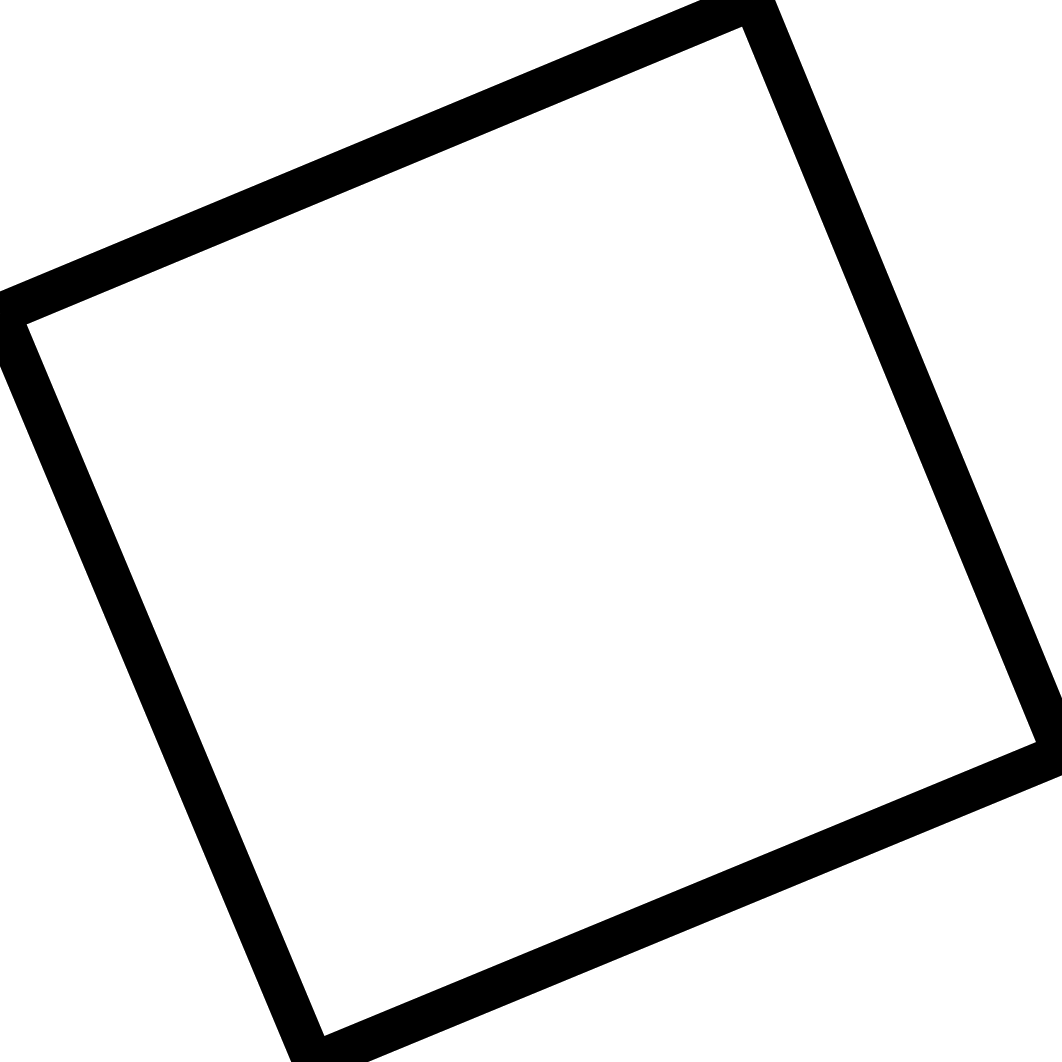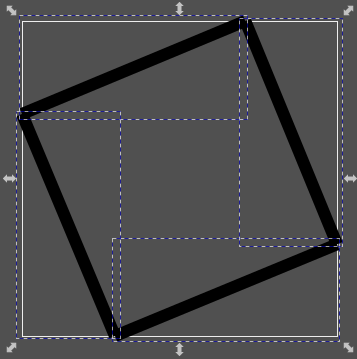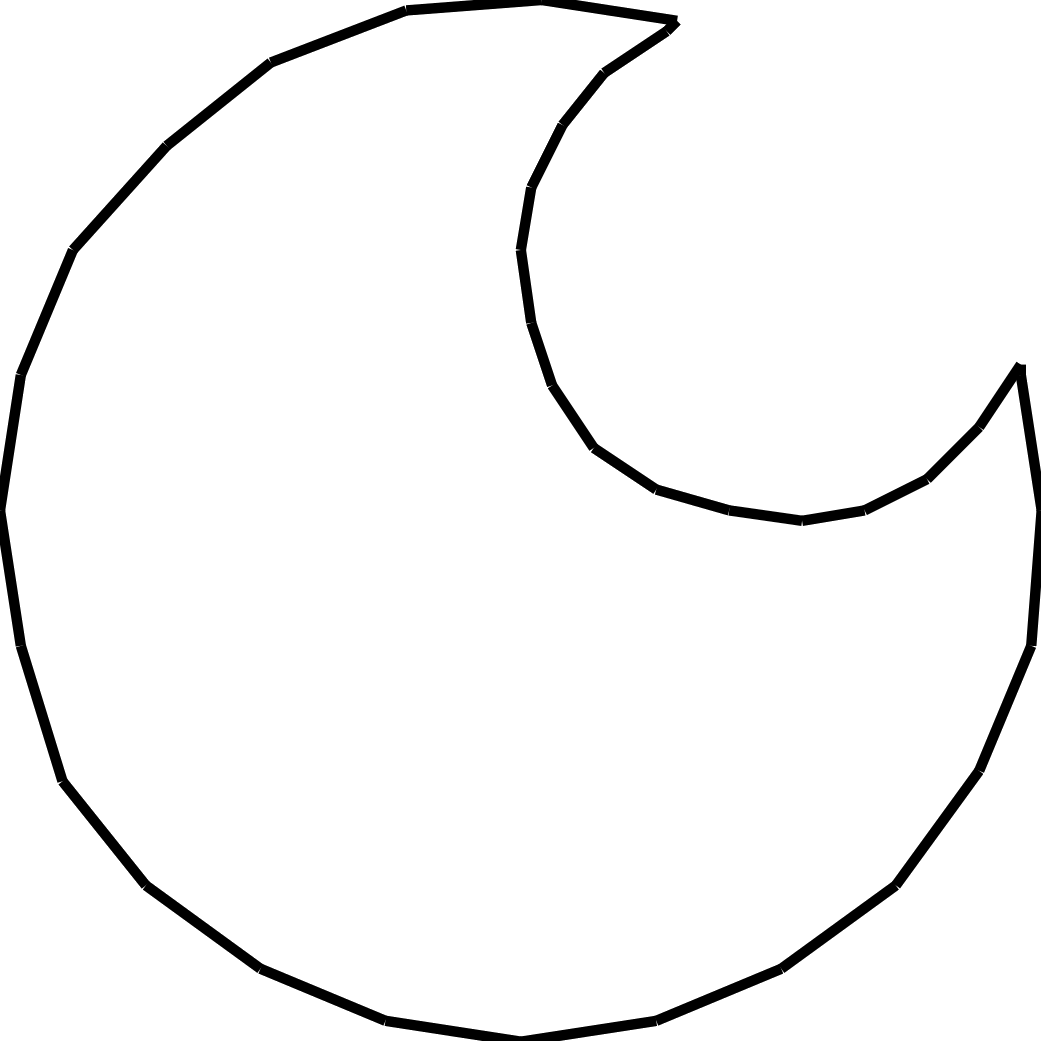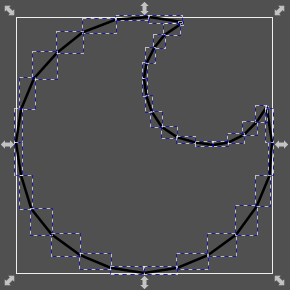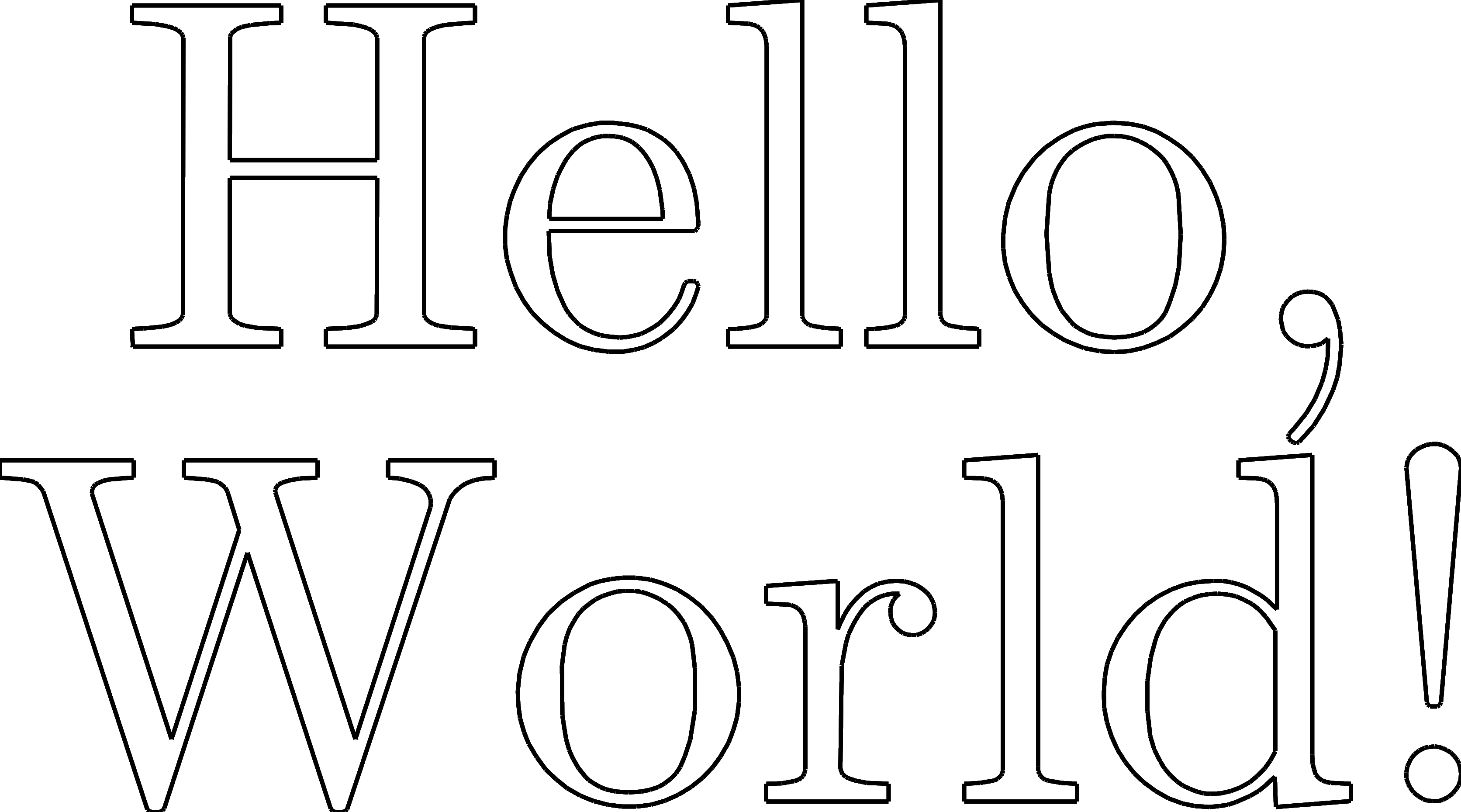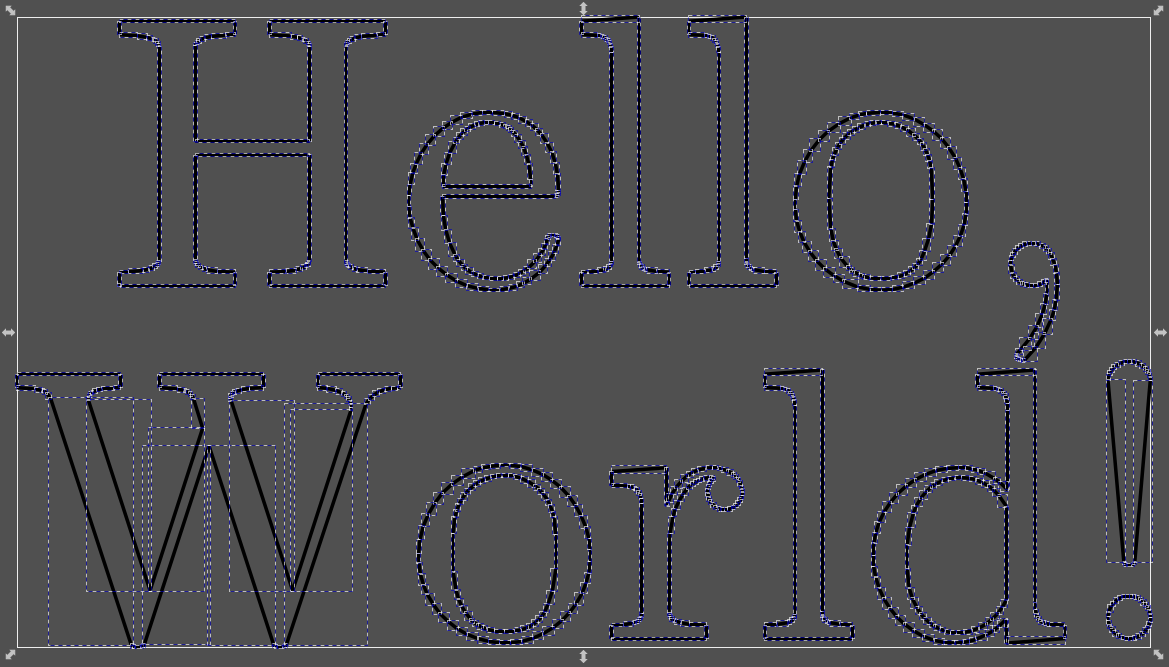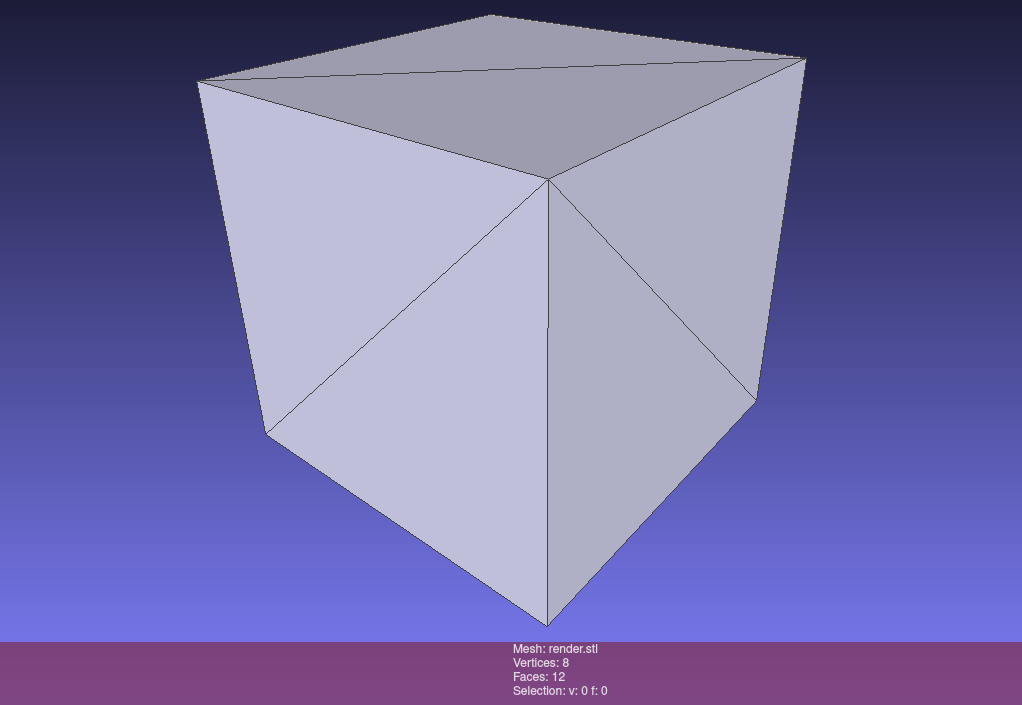A new algorithm capable of extracting surfaces from Signed Distance Functions (SDFs). It supports:
- Sharp corners/edges.
- Automatic simplification of planar sections.
- Multiple closed surfaces.
See the examples folder.
| Square (26µs, 4 lines) | Circles (1ms, 37 lines) |
Text (985ms, 17 surfaces, 814 lines)
The 3D version is broken for surfaces more complex than the example translated cube (help wanted).
| Cube (621µs, 12 faces) |
It uses 2 main parameters to control surface generation: the minimum angle to place a new vertex and the step size to avoid missing small perturbations in the surface.
It works by starting on a random point (2D) or edge (3D) of the surface, choosing a direction and moving along the surface (using a tangent) until the tangent at the new position is at an angle greater than minAngle. It then places a new vertex, creating a line (2D) or triangle (3D) and adds to the processing queue the new point (2D) or edges (3D). The queue is processed in a loop in the same way. It also detects when we reached the other end of the surface and properly closes the surface, finishing the algorithm. To support multiple closed surfaces, a simple voxel sampler with gradient descent to find the surface is used.
For example, it is capable of creating squares and cubes with the optimal number of lines/faces very fast, no matter the transform applied to them.
